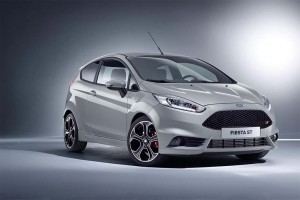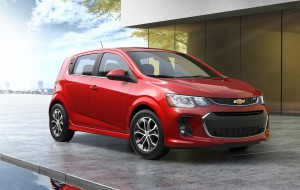March saw an even bigger surge in demand for SUVs, CUVs and other light trucks but, according to industry data, sales of sedans, coupes and hatchbacks continued to decline – an ongoing trend that is expected to lead to the demise of a number of once-popular passenger car models, including Ford’s big Taurus and subcompact Fiesta, as well as the little Chevrolet Sonic.
And even more passenger car models could be on the way out, according to industry sources, even as manufacturers move to expand their light truck portfolios to take advantage of one of the biggest market shifts in decades.
“I think we’re going to see some contraction in passenger car nameplates,” said Stephanie Brinley, principle automotive analyst at IHS Automotive. “That’s not to say they’ll go away. Some people still like them….but there’ll be some rationalization over time.”
(March sales roar in like a lion – for trucks, anyway. Click Here for more.)
The Wall Street Journal on Wednesday reported that General Motors will abandon the Sonic, a subcompact model that has suffered from a major decline in sales since fuel prices began tumbling and American motorists started shifting, in record numbers, to utility vehicles. Sonic was listed by several sources last autumn as among as many as nine passenger car nameplates GM was considering killing off due to declining sales. It reportedly also is still weighing the fate of its biggest mainstream sedan, the Chevy Impala.
That said, a top GM official said the automaker isn’t dropping out of the passenger car market this week.
“With these car segments, yeah, we’ve seen a decrease, but you’ve also seen an industry that’s growing, and these (car) segments are still worth 2 million vehicles,” Alan Batey, GM’s executive vice president and president of North America, told The Detroit News following a dealer meeting in Las Vegas. “A 2-million-vehicle midsize car market in the U.S. is not a segment that you don’t want to be part of.”
Rival Ford Motor Co., however, has repeatedly signaled that it is shifting its product portfolio to reflect changing consumer preferences. During a meeting with analysts in January, CEO Jim Hackett said the second-largest U.S. automaker will increase the number of utility vehicles in its line-up by 10%, even as it reduces its passenger car nameplates by an equal amount.
(Hackett tells analysts cuts coming to passenger car line-up. Click Here for more.)
The automaker’s senior management team echoed that strategy last month when it revealed a tidal wave of new product coming by 2020, with a big emphasis on light truck models. By 2020, they signaled, SUVs, CUVs and pickups will account for as much as 90% of Ford’s U.S. sales.
Few would be surprised to see either the Ford Fiesta or Taurus go away. Sales have been marginal, at best, for several years. The automaker reported a 3.4% jump in U.S. demand during March, with its utility vehicles setting records. Ford cars overall were down 7.0%, however, the Fiesta off 9.5% and Taurus down a brutal 36.3 percent.
If the automaker does kill off the big sedan it would mark the second time Taurus was pulled from production. Back in the late 1980s the then-new nameplate was billed as a revolutionary take on a midsize model and, for several years, Taurus outsold the segments traditionally dominant Japanese models, the Toyota Camry and Honda Accord. But it eventually slid towards oblivion, largely serving as a rental fleet filler before being pulled in 2007. After an absence, Taurus returned as a full-size model but failed to come close to matching its original popularity.
Nameplates frequently vanish from the market. In some cases, a poorly received model will be redesigned and given a new badge, as GM has done in the compact segment with the Cavalier that was replaced by the Cobalt and is now the Cruze. When Ford got rid of the original midsize Taurus it returned with a radically styled Fusion.
But some models simply vanish, especially if their segments lose momentum. At one point, when annual sales topped 1 million, noted analyst Brinley, there were nearly 20 different minivans sold in the U.S. Today, there are less than a half-dozen, key players like GM and Ford abandoning the segment and focusing on more popular utility vehicle alternatives.
The smallest of the Detroit Big Three, Fiat Chrysler Automobiles, has already relegated a number of sedans to the scrapheap, most recently including the Dodge Dart and Chrysler 200, retooling their factories to build SUVs and pickups. FCA no longer builds a single passenger car model in the U.S., though two Dodge muscle cars and the big Chrysler 300 sedan are produced in Canada.
But even though sedans and coupes may be losing volume rapidly automakers aren’t walking away entirely. As GM’s Batey stressed, there are still some segments worth competing in.
And there are other, more complicated reasons to keep production going, even with some slower selling models, added Brinley. They have to consider “how does (a nameplate) perform in other markets, as well as the U.S., and what platform does it support?” Since most nameplates share their platforms with other models, killing off one could weaken the business case for the others, even if they are selling well.
But the trend towards fewer passenger car models could accelerate, industry analysts believe, and even Asian and European manufacturers may have to rationalize their lines if the shift from sedans and coupes to SUVs, CUVs and pickups continues.
(Popular Ford Escape flunks IIHS crash test. Click Here for the story.)



